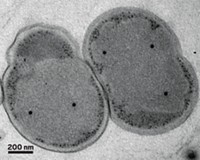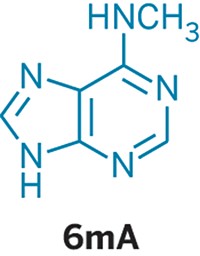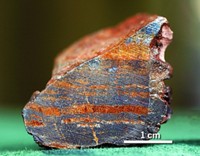Advertisement
Grab your lab coat. Let's get started
Welcome!
Welcome!
Create an account below to get 6 C&EN articles per month, receive newsletters and more - all free.
It seems this is your first time logging in online. Please enter the following information to continue.
As an ACS member you automatically get access to this site. All we need is few more details to create your reading experience.
Not you? Sign in with a different account.
Not you? Sign in with a different account.
ERROR 1
ERROR 1
ERROR 2
ERROR 2
ERROR 2
ERROR 2
ERROR 2
Password and Confirm password must match.
If you have an ACS member number, please enter it here so we can link this account to your membership. (optional)
ERROR 2
ACS values your privacy. By submitting your information, you are gaining access to C&EN and subscribing to our weekly newsletter. We use the information you provide to make your reading experience better, and we will never sell your data to third party members.
Environment
Archaea Feed On Perchlorate
Microbiology: Chemistry discovery could be a clue to how life evolved on early Earth
by Jyllian Kemsley
April 8, 2013
| A version of this story appeared in
Volume 91, Issue 14

Microbes of the archaea group have been found to feed on perchlorate (Science, DOI: 10.1126/science.1233957). The findings demonstrate that biological breakdown of perchlorate (ClO4–) into chloride is more widespread than previously realized. Similar microbes may have helped create oxidizing conditions for life on a young Earth before the rise of photosynthesis.
Most of the perchlorate in today’s environment comes from manufacturing and use of perchlorate compounds for rocket fuel. But perchlorate also forms naturally in the atmosphere, through processes such as lightning interacting with sea salt aerosols or reactions between ozone and chloride compounds. Several species of bacteria are known to enzymatically reduce perchlorate and chlorate (ClO3–)—together called “(per)chlorate”—to O2 and Cl–.
In the new work, a research team led by microbiology graduate student Martin G. Liebensteiner and professor Alfons J. M. Stams of Wageningen University, in the Netherlands, found that Archaeoglobus fulgidus, an anaerobic archaea species that lives at high temperatures, also reduces (per)chlorate.
A. fulgidus enzymatically reduces (per)chlorate to chlorite (ClO2). Chlorite then reacts abiotically with sulfide to produce Cl– and oxidized sulfur compounds. A. fulgidus can then enzymatically recycle the oxidized sulfur compounds back to sulfide, deriving energy from the process, Liebensteiner says.
Finding perchlorate-reduction enzymes in archaea as well as bacteria, and especially in a species like A. fulgidus that grows in conditions resembling early Earth, indicates that ancient microbes may have fed on perchlorate in the atmosphere and released oxidative compounds on a preoxygenated Earth.
“It ties the early use of (per)chlorate for microbial metabolism to the emergence of life adapted to more oxidizing conditions,” says Samuel Kounaves, a chemistry professor at Tufts University.





Join the conversation
Contact the reporter
Submit a Letter to the Editor for publication
Engage with us on Twitter